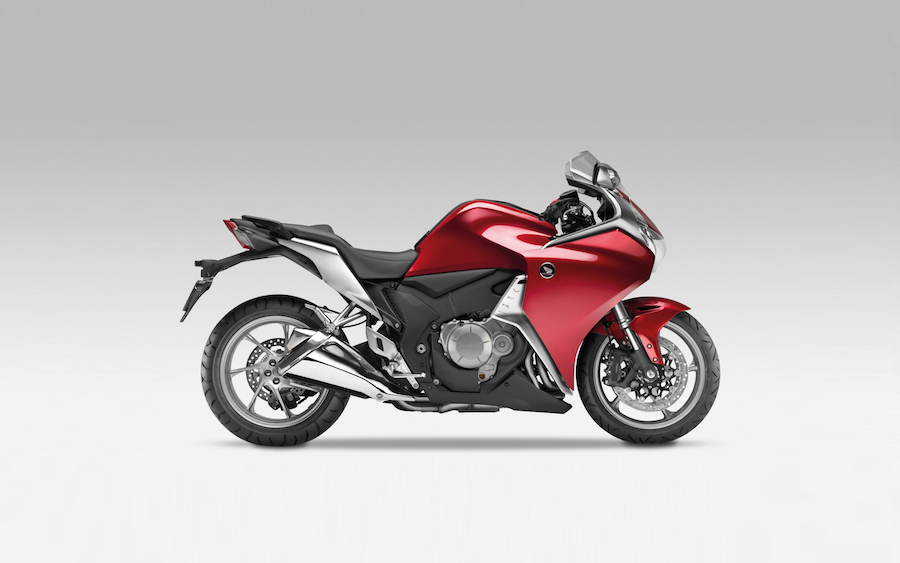Honda's new technology to help riders adjust their weight to improve their technique.
Riding aids have become commonplace over the last few years but Honda’s latest plan is to create bikes that actually teach you to become a better rider.
Honda’s new technology
While the latest in ABS, stability control, anti-wheelie and traction control systems can help prevent accidents, they do nothing to teach riders how to extend the limits of their own bikes and avoid getting into trouble in the first place. Unlike cars, where these electronic nannies were spawned, bikes are massively influenced by the position of the rider – and his or her weight – in relation to the manoeuvre they’re undertaking. Hanging off the bike in corners to help keep the fatter part of the tyre in contact with the road, for instance, adds grip where traction control can merely reduce power to prevent a crash. Similarly, moving forwards and backwards will influence a bike’s tendency to do a wheelie or stoppie.
Honda has now filed patent applications for systems that will actually move parts of the bike in contact with the rider – the seat and footpegs – to encourage them into the right riding position.
Initially the patents suggest that these systems are being developed for the Goldwing – a model that’s actually relatively unaffected by moving riding position thanks to its massive weight – and the VFR1200F. As these models are Honda’s technology showpieces, it makes some sense that they might be the first to adopt the adapting ergonomics, but should the systems prove effective there’s no reason to think they couldn’t filter down to more bikes over time.
Getting bums moving- Moving seats
Honda’s patents show that the firm’s ideas are still in a fairly early stage, since it has come up with several different methods for moving the position of the seat. These range from rocking platforms that shift the whole seat to servo-controlled rams that alter the shape of the padding underneath the surface. But all have the same objective – the idea is to tilt the seat forward, or raise the rear, under acceleration, and to do the reverse during deceleration. The effect is twofold. On one hand the angle of the seat helps work against inertia; accelerate hard and the seat will tilt up at the rear to stop you from sliding backwards. But more subtly, the tilting will nudge you to move your body weight. Under acceleration its forward-inclined position will encourage you to slide to the front of the seat and to lean forwards, moving your weight over the front wheel. Under deceleration, the effect is reversed, and the seat’s rearward angle will make it natural to sit up and move backwards.
Moving pegs
While a lot of riders are already pretty good at positioning their weight for acceleration and braking, fewer shift their weight as effectively as they might in corners. Honda is addressing that, too. Rather than shifting the seat, a second patent in the group explains how the firm is looking to tilt the footpegs. In particular, the peg on the outside of the corner is raised – either by tipping it upwards or shifting the entire footrest assembly up – to help make riders lean towards the direction of the bend and shift their bodyweight by moving across the seat. Basically it’s helping you learn to hang off. As with the moving seat, there are several solutions shown as to how the pegs might be moved, ranging from solenoids that push directly on the pegs to a system with a single central servo connected to both pegs via control cables. It’s clearly still very early days for the idea, but one that Honda sees enough merit in to develop.
Pillions get it too
Interestingly, both the moving seat and pegs in the patents are shown to work not only on the rider but also on the pillion seat. That means passengers, who might well be less well acquainted with the subtleties of riding bikes, are also encouraged into a favourable position during manoeuvres.
Sat-nav foresight
As well as taking its information from obvious things like acceleration sensors, tilt sensors, throttle position and brake pressure, the central control unit that decides on the position for the seat and pegs is also claimed to be wired into an on-board sat-nav system. That means it will be able to ‘read’ the road ahead, knowing which direction it turns, and get the rider and pillion into position in advance before the rider makes any control inputs. It’s a vital element of the system, since body position is something that’s usually taken care of before you hit the brakes, tip into a corner or wind on the power.
